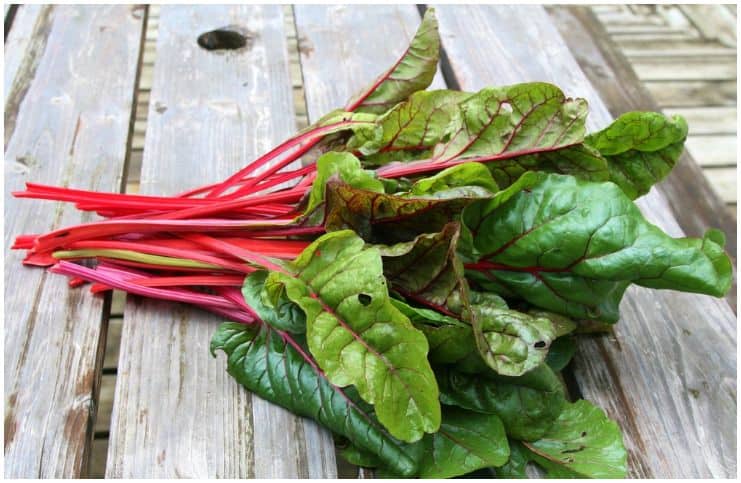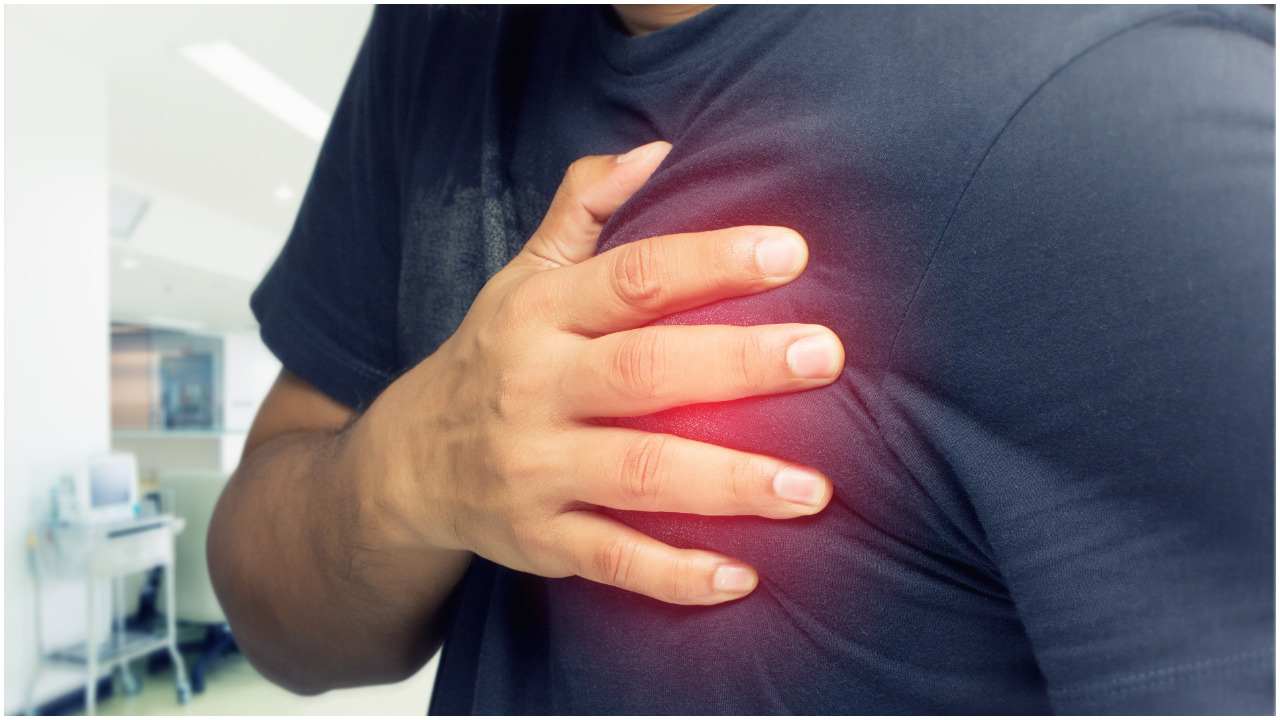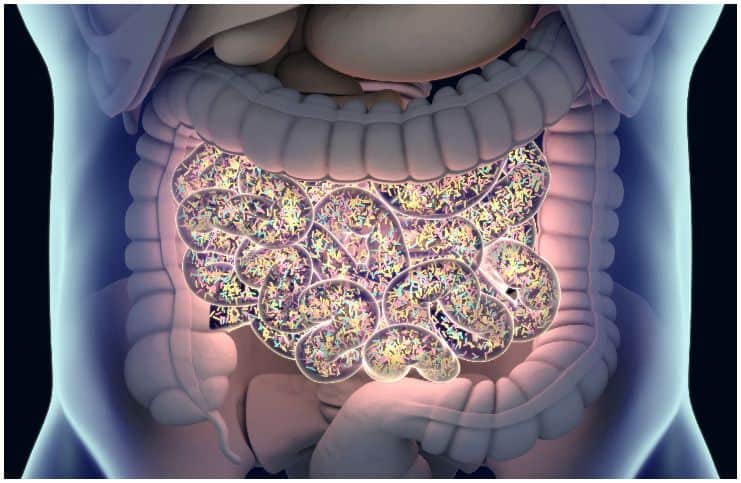Swiss chard (scientific name Beta vulgaris), also known as spinach-chard, is a member of the chenopod plant family, that also includes other nutritious foods, like – spinach, beets, and quinoa.
It has large, dark green leaves, that are harvested at various stages of maturity. This plant is native to the southern regions of France, Greece, Italy, Iran, Croatia, Iraq, Jordan, Israel, Syria, Lebanon, and Turkey.
Nutrition Facts
It is a good source of dietary fiber, vitamin B6, vitamin B1, calcium, pantothenic acid, magnesium, iron, potassium, riboflavin, phosphorus, zinc, vitamin A, niacin, vitamin C, selenium, vitamin E, manganese, thiamin, protein, and vitamin K. Moreover, it contains the antioxidants zeaxanthin, lutein, beta-carotene, and choline.
Health Benefits
Improves Vision
Carotenoids like beta-carotene, zeaxanthin, and lutein, have been associated in many ways to optimal eye health and a considerable reduction in glaucoma, macular degeneration, and night blindness.
Furthermore, beta-carotene is acknowledged as a provitamin due to the fact that it converts into retinol, the active form of vitamin A. This vitamin is essential for skin health and a proper neurological function. Another benefit of beta-carotene for the human body includes inhibiting the proliferation of some types of cancer cells, especially those affecting the stomach, lungs, breast, cervix, mouth, large intestine, and bladder.
Heart Health
One cup of this vegetable provides more than three times the recommended daily intake of vitamin K, a versatile nutrient that can have numerous health benefits, especially for the cardiovascular system. People with a deficiency in vitamin K have notably lower bone mineral density compared to individuals who consume foods high in this vitamin.
Cancer Prevention
It contains quercetin, a type of flavonoid which gives fruits and plants their color. Quercetin has strong antioxidant and anti-inflammatory properties as well as it can help the liver remove compounds and toxic chemicals that may cause cancer. Also, according to some studies, eating foods with quercetin might lower blood pressure.
A Source of Healthy Fats
This vegetable is a source of omega-3 fatty acids, that are needed for the production of hormone-like compounds that help regulate heart rate, blood pressure, and blood clotting. Additionally, omega-3 fatty acids are important nutrients for the normal functioning and production of muscles, cells, organs, and nerves.
Promotes Bone Growth
It contains phosphorus, an essential mineral that is involved in hundreds of cellular activities every single day. For example, phosphorus works in association with calcium to form strong and healthy bones, that can withstand the normal tear and wear of day-to-day activities.
Also, this mineral helps in the transmission of nerve impulses, enhances the breakdown of niacin and riboflavin, gives plentiful and stable energy, and aids the kidneys to properly excrete wastes. More importantly, it is involved in digestion by releasing the energy stored inside of the food you consume.
Side Effects
There are no known side effects.
Rhubarb
It looks like red celery, however, it has bigger leaves and is a member of the fruit family. It thrives in cold climates and is native to Tibet, Western China, Siberia, Mongolia, and neighboring areas, where this plant is dried and used in traditional medicine.
Because it is intensely sour, this plant is rarely consumed raw, but it is cooked, sweetened with sugar, or used as an ingredient.
Nutrition Facts
It is high in vitamin C, potassium, vitamin K, manganese, calcium, iron, copper, phosphorus, magnesium, selenium, folate 9 (also known as vitamin B9), zinc, vitamin B1, vitamin B2, vitamin B3, vitamin B5, vitamin B6, vitamin A, choline, and vitamin E.
In addition, it contains many active constituents, like polyphenols called anthraquinones (they increase the amount of fluid in the large intestine) and tannins (they serve as a natural defense mechanism against microbial infections).
Health Benefits
Improves Bone Health
Every serving of this plant has about 45 percent of the daily recommended intake of vitamin K, an essential nutrient that can limit neuronal damage in the brain, supports healthy bone growth, and prevents Alzheimer’s. Combined with the high amount of calcium and other minerals found in this plant, as a whole, it is an important player in bone protection.
Fights Free Radical Damage
It contains zeaxanthin, lutein, and beta-carotene, all potent antioxidants that help to keep the vision sharp and lower the risk of developing age-related macular degeneration. Also, these antioxidants can neutralize free radical damage throughout the human body. Free radicals are wastes from cellular metabolism which may cause healthy cells to mutate, resulting in a variety of chronic diseases.
Eases Digestion
This plant is a source of dietary fiber, which can stimulate the contractions of the smooth muscles which force food through the digestive system, as well as prevents constipation.
Side Effects
There are no side effects, except in rare cases this plant may cause nausea, stomach discomfort, diarrhea, and vomiting, due to its strong laxative effects.
Swiss Chard vs Rhubarb – Which Has A Better Nutritional Profile?
From a nutritional point of view, Swiss chard is clearly the winner.
Images credit – Shutterstock
READ MORE: Honeydew Melon – Health Benefits




